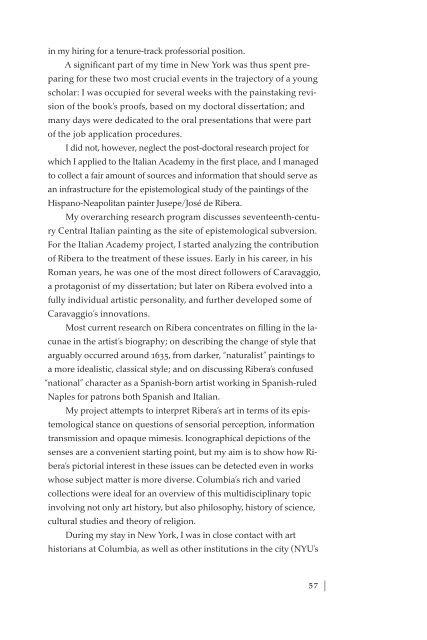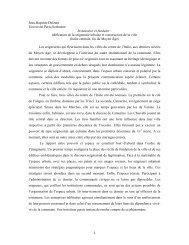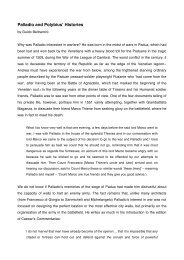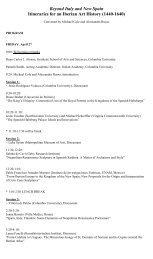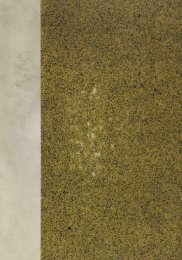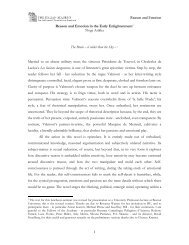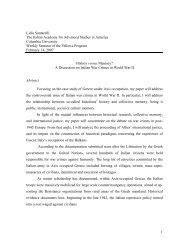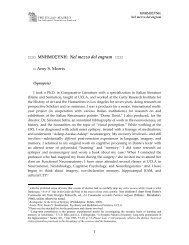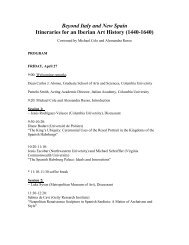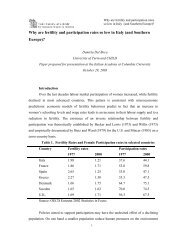2011-2012 - The Italian Academy - Columbia University
2011-2012 - The Italian Academy - Columbia University
2011-2012 - The Italian Academy - Columbia University
You also want an ePaper? Increase the reach of your titles
YUMPU automatically turns print PDFs into web optimized ePapers that Google loves.
in my hiring for a tenure-track professorial position.<br />
A significant part of my time in New York was thus spent preparing<br />
for these two most crucial events in the trajectory of a young<br />
scholar: I was occupied for several weeks with the painstaking revision<br />
of the book’s proofs, based on my doctoral dissertation; and<br />
many days were dedicated to the oral presentations that were part<br />
of the job application procedures.<br />
I did not, however, neglect the post-doctoral research project for<br />
which I applied to the <strong>Italian</strong> <strong>Academy</strong> in the first place, and I managed<br />
to collect a fair amount of sources and information that should serve as<br />
an infrastructure for the epistemological study of the paintings of the<br />
Hispano-Neapolitan painter Jusepe/José de Ribera.<br />
My overarching research program discusses seventeenth-century<br />
Central <strong>Italian</strong> painting as the site of epistemological subversion.<br />
For the <strong>Italian</strong> <strong>Academy</strong> project, I started analyzing the contribution<br />
of Ribera to the treatment of these issues. Early in his career, in his<br />
Roman years, he was one of the most direct followers of Caravaggio,<br />
a protagonist of my dissertation; but later on Ribera evolved into a<br />
fully individual artistic personality, and further developed some of<br />
Caravaggio’s innovations.<br />
Most current research on Ribera concentrates on filling in the lacunae<br />
in the artist’s biography; on describing the change of style that<br />
arguably occurred around 1635, from darker, “naturalist” paintings to<br />
a more idealistic, classical style; and on discussing Ribera’s confused<br />
“national” character as a Spanish-born artist working in Spanish-ruled<br />
Naples for patrons both Spanish and <strong>Italian</strong>.<br />
My project attempts to interpret Ribera’s art in terms of its epistemological<br />
stance on questions of sensorial perception, information<br />
transmission and opaque mimesis. Iconographical depictions of the<br />
senses are a convenient starting point, but my aim is to show how Ribera’s<br />
pictorial interest in these issues can be detected even in works<br />
whose subject matter is more diverse. <strong>Columbia</strong>’s rich and varied<br />
collections were ideal for an overview of this multidisciplinary topic<br />
involving not only art history, but also philosophy, history of science,<br />
cultural studies and theory of religion.<br />
During my stay in New York, I was in close contact with art<br />
historians at <strong>Columbia</strong>, as well as other institutions in the city (NYU’s<br />
57 |


